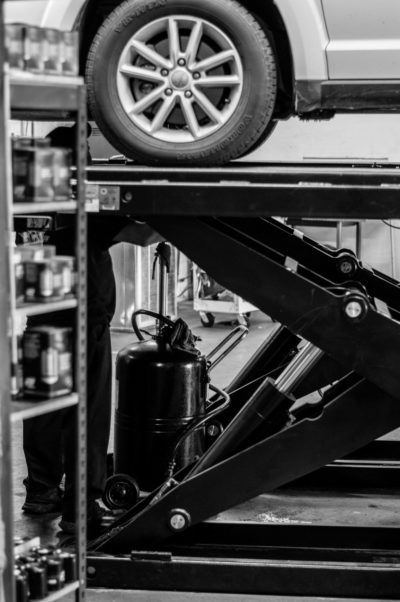How Do I Get My Car Ready for Winter?
Winter weather brings cold temperatures and sometimes dangerous driving conditions. Long before the temperature turns cold you can prepare your vehicle for comfortable and safer Winter driving.

Be prepared for Winter driving
In November and early December we recommend:
1. Measuring Tire Tread depths
2. Testing your Battery
3. Inspecting Windshield wiper blades
4. Inspecting the Windshield for chips and cracks
5. Inspecting Brakes
6. Warming the engine in the morning
Tires may have become worn due to high mileage and or alignment problems. New tires with safe treads are key to keeping you safe in the road in wet and freezing weather. You can check your tire treads at home with an easy test the “Penny Test”.
Place a penny between the tread ribs on your tire. A “rib” refers to the raised portion of tread that spans the circumference of your tire. Tire tread is composed of several ribs. Turn the penny so that Lincoln’s head points down into the tread. See if the top of his head disappears between the ribs. If it does, your tread is still above 2/32” , If you can see his entire head, it may be time to replace the tire because your tread is no longer deep enough.
If you don’t feel comfortable or you’re just not sure that the treads are safe, stop by your local auto repair shop, they should offer a free tire tread inspection. Also keeping the correct tire pressure (PSI) in your tires year round will give you the best performance, gas mileage and safety.
Have your battery tested. The last thing you want is to be left in the cold with a dead battery. If you’re having hard, slow, or difficult starts in the Fall, there is a good chance your battery is running low. Depending on the age of the battery it may be able to be recharged though often it needs to be replaced.
Inspect your wiper blades and windshield. Wiper blades work hard all year keeping your windshield clear from rain and dirt. The heat of summer dries the soft, rubbery blades causing them to crack and split. Replace blades at least twice a year for best results.
Carefully check your windshield for cracks and chips. Quickly heating a vehicle and warming the cold glass too quickly can cause a small chip or crack to quickly spread and become a serious problem for visibility and safety of the windshield.
Test and inspect your brakes and brake fluid. Brakes slowly wear down so that you often don’t notice how worn and thin the pads have become. Often brake pads wear down before you hear noise or feel a problem while driving. Removing the wheels to inspect the brakes allows the Tech to see the whole brake system. To be safe replace brake pads when they reach 20% or less. The type of roads you drive everyday and style of braking (riding the brakes or coasting to slow down) greatly effects how often you will need to replace brakes and do maintenance. Your brake system uses fluid to pressurize your brakes applying more force through your vehicle than from a pedal alone. If this fluid becomes dirty with deposits like dirt or corrosion from the engine it will clog your brake system causing damage.
Warm your engine on a cold morning or after the vehicle has been parked. A few minutes of idling in the morning will get the engine oil warm and ready to protect your engine from friction. As well as faster heating inside and defrosting windshields for a more comfortable drive. The time is takes to make your morning cup of coffee is all you need to warm your vehicle.
Whenever maintenance or repairs are recommended ask the Service Advisor to show you the worn parts and dirty fluids. They should thoroughly explain why the service is needed. Any reputable shop will gladly escort you to your car while the Tech is at work and explain what they have done and recommendations for future service.
While it may take some time to inspect your vehicle and prepare for Winter driving it will pay off when you feel, see and know you and your family are safer on the road.

